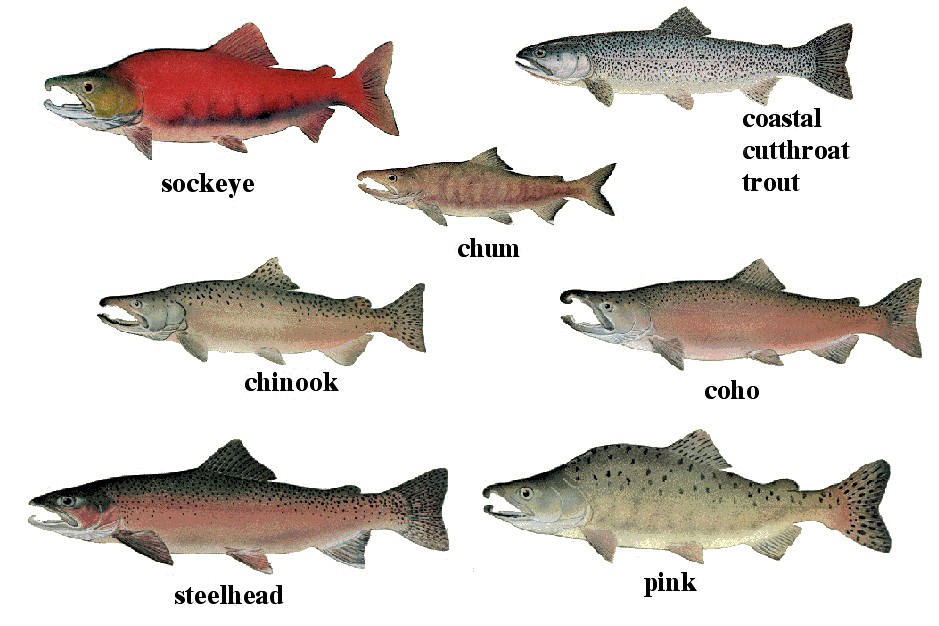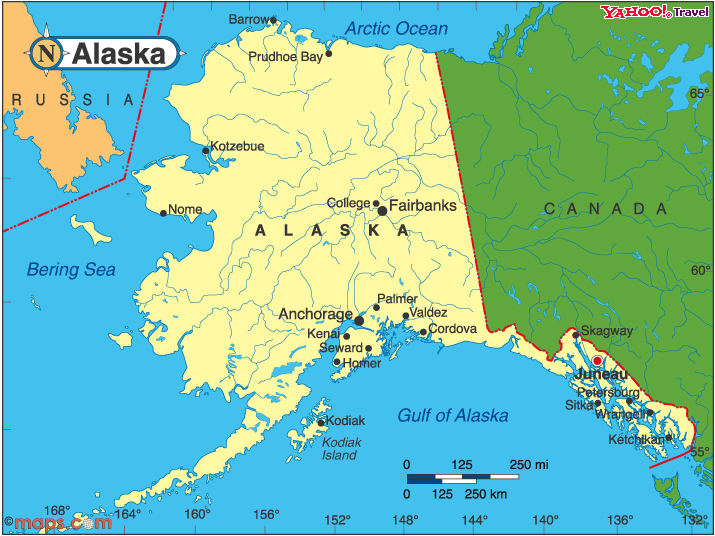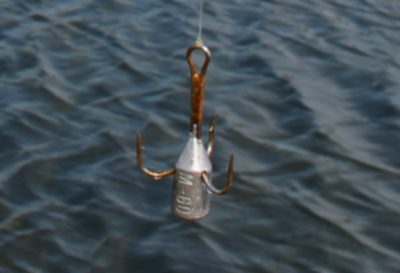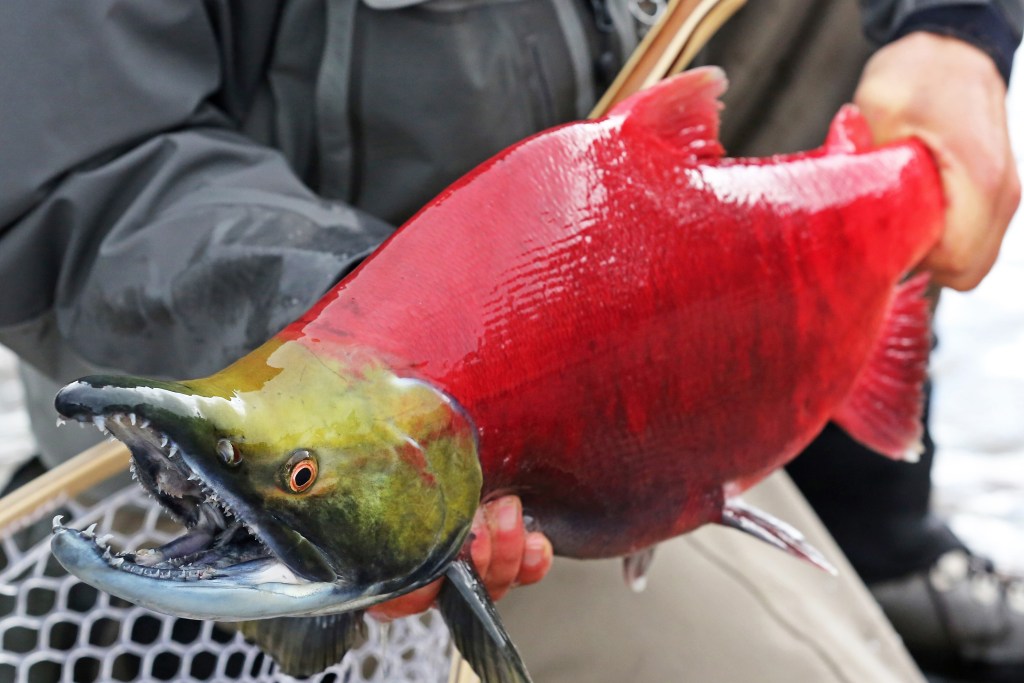Alaska is a world-renowned sport fishing destination for Salmon fishing. With over 3,000 rivers, 3 million lakes, and 6,640 miles of coastline, for Salmon it’s only a matter of where to go and how to catch them. Snagging is one very popular way to catch Salmon in areas of Alaska. What is Snagging Alaska Salmon?
Snagging Alaska Salmon is a method of fishing using the hook, without the fish having to take the bait with their mouth. It’s sometimes used during Salmon Runs by pulling & jerking the line quickly out of the water when movement is felt, with the intention of setting the hook into a fish’s flesh.
Most of these people that work as Alaska Wildlife Troopers are people who personally love to hunt and fish, So they have been able to experience fishing and hunting in Alaska from both sides of the badge. They have pride and care deeply about regulations that need to be enforced in Alaska. They know the rules You should too!
When Do the Salmon Run in Alaska
The salmon runs start in early May and continue through the summer until September, but they vary each year. Also, different species of salmon run at different times throughout the summer. The first type of Salmon to run are Chinook (king) salmon, followed by Sockeye (red) salmon, and then the Coho (silver) salmon.
The best time to come to Alaska is in the summer but many people who are sportsmen come when their favorite type of Salmon is running and is in season. From early May to early June is when you’ll catch King Salmon. Sockeye Salmon in June till late July and the Silver Salmon in July until late October.
One of the choice rivers in Alaska for fishing Salmon is the Kenai River 82 miles of a fisherman’s paradise with a natural wilderness background and trophy size fish when the fish return to the river from the ocean in order to spawn.
The Kenai River originates in the Kenai Lake as a result of melting glaciers on the Kenai Peninsula south of the capital city of Anchorage. It eventually empties into the Gulf of Alaska and is close to the city of Anchorage making it a popular tourist destination.
All of the Pacific salmon species, including king salmon, sockeye salmon, pink salmon, and silver salmon, run and can be caught in here the Kenai River. The highlight of salmon fishing on the Kenai River is the king salmon, which are known for their large size, and can get up to nearly a hundred lbs. The largest king salmon on record was caught in the Kenai River and weighed 97.4 lbs.
The Types Of Salmon In Alaska

Where Is The Best Place For Snagging Salmon
 The first big push of Sockeye Salmon happens in the saltwater flats and beaches of Seward, Alaska. Sockeye Salmon are the tastiest of all of North America’s Salmon species. Often called Red Salmon, they have dark, fatty meat and are a favorite of glitzy restaurants and famous chefs all around the world. Not to mention hundreds of grizzly bears waiting eagerly for the annual river run.
The first big push of Sockeye Salmon happens in the saltwater flats and beaches of Seward, Alaska. Sockeye Salmon are the tastiest of all of North America’s Salmon species. Often called Red Salmon, they have dark, fatty meat and are a favorite of glitzy restaurants and famous chefs all around the world. Not to mention hundreds of grizzly bears waiting eagerly for the annual river run.
The fishery here in Steward Alaska is tidal. The best fishing is using on the incoming tide but just like all tidal waters incoming water is also good and is preferred by some anglers. In this area, fishing is like shooting fish in a barrel. Seward is also one of the only places where snagging is legal on the Kenai Peninsula.
The usual setup is a rod-like Ugly Stick that is one piece and reel with some heavy line, such as a braided line with a barrel swivel tied onto the end of it, and a snagging hook. A snagging hook is generally a treble hook with some lead molded in the middle of the hook.
On the Beach, you can cast as you can get your line out, or in low tide, fish may come right up to the edge of the shoreline. Snagging salmon is a method of catching fish for food. Snagging is best accomplished in river systems, as the salmon gather in large numbers before they spawn.
Snagging is not complicated, but the technique does require a methodical approach to maximize success. Here is the thing, Snagging is illegal in some areas of Alaska and anglers must check the regulations and postings before they go out. Use the Jerk and Reeling technique from any distance. Be careful that everyone is using this technique. You want to make sure you don’t come too close to anyone.
The limit here in Seward for Sockeye Salmon is 6 fish per/person with a double bag limit allowed. A double bag limit means you can stay for multiple days and have up to 12 fish in your cooler. One other option in Seward is behind the RV park next to the Boat Harbor right in downtown Seward.
It’s the same type of fishing with a chance to catch a King Salmon this way as well. First run sockeye in Seward is a great way to get a good start on filling the freezer. On June 11, the world-famous Russian River located in Cooper Landing, Alaska opens up for the first-run sockeye as well.
Typically the first run sockeye that travels up the Kenai River is destined for the Russian River. Sockeye from the Kenai and the Russian is only allowed to be kept if they are fair-hooked in the mouth. All snagged fish MUST be released or you face a fine from the game warden.
Flossing Fishing Technique for Salmon
When you run into areas where you won’t be able to use the Snagging Technique, the best technique for catching Sockeye Salmon is to:
- figure out the best weight to use so your line is barely holding bottom hitting the rocks.
- You can cast upstream at about 2 o’clock and let your hook sink and drift downstream.
- The Salmon will be facing upstream with their mouths opening to breathe, and the line between the weight and your hook runs through their mouth, and when you feel your line stop you set the hook.
- This pulls the line through their mouths and then the hook sets into the side of their mouth otherwise known as ‘flossing.’ Sockeye is the only salmon you should do this with on the Kenai and Russian because studies show that about 1 in 10,000 Sockeyes actually will bite on large runs of fish.
Is It Legal To Snag Salmon in Alaska
 Sportsmen must understand the subtle differences between legal and illegal in some Alaska regulations. For example, the hugely popular sockeye salmon fishery on Alaska rivers like the Kenai is based on snagging the great salmon. But it is only legal if the fish is snagged in the mouth. Snagging fish in saltwater is legal anywhere in Alaska it’s not specifically prohibited.
Sportsmen must understand the subtle differences between legal and illegal in some Alaska regulations. For example, the hugely popular sockeye salmon fishery on Alaska rivers like the Kenai is based on snagging the great salmon. But it is only legal if the fish is snagged in the mouth. Snagging fish in saltwater is legal anywhere in Alaska it’s not specifically prohibited.
Snagging the Salmon in the tail, back or side is not legal. And when waves of fish are flooding the river, snagging fish is almost impossible not to do. For anglers who haven’t learned the art of the “flip,” it may be the only way they hook a fish. It’s understandable for an angler who has waited all year, or even many years, for the chance to catch these fish makes it especially tempting to retain some that are snagged.
Game officials take their laws very seriously and are often watching these fisheries from a distance, ready to cite anglers for snagging salmon. The Alaska Department of Fish and Game (ADF&G) is responsible for producing the hunting and fishing regulations in Alaska. The job of enforcing those regulations falls to the Alaska Wildlife Troopers.
Most of these people that work as Alaska Wildlife Troopers are people who personally love to hunt and fish, So they have been able to experience fishing and hunting in Alaska from both sides of the badge. They have pride and care deeply about regulations that need to be enforced in Alaska. They know that most people are in Alaska to enjoy the same things that they enjoy and want to follow the rules. The easiest way to do that is to pick up a copy of the Alaska Department of Fish & Game rules and regulations and carry it with you as you make that visit to Alaska’s great outdoors.
When hiring a Tour Guide or on arrival check in the area of Alaska where you’ll be staying for updated rules and regulations for fishing. There are lots of areas that are marked off for ‘No Fishing’ in areas where other people are fishing close by so be aware for certain reasons, not every spot is open to the public.
If no one else is fishing in an area there might be a violation of fishing in this area. There are Single Hook laws for certain fish and certain seasons for species of Salmon. There are Time closures on lakes and streams that are patrolled by (ADF&G) that you need to be aware of. Be aware to look for postings.
Fish should be hooked in the mouth. A popular misconception, especially on the Kenai and Russian rivers, is that as long as it is hooked in the head or nose it is legal.
You never know when the person fishing next to you is an undercover Trooper or just a concerned citizen with a cell phone. So Anglers are told to respect the laws and always do the right thing like recording their catch which is mandatory for fishing in Alaska.
Let the fish go if you didn’t hook it legally or sooner or later you’ll get caught. Let it go and do the right thing! If you purchase a non-resident fishing license you can choose a 1-day, 3-day, 7-day, 14-day, or annual license. Set an alarm on your phone so you don’t make a simple mistake. These licenses expire at midnight on the last day that the license is valid.
How to Snag Salmon
Snagging Alaskan Salmon is a method that is used for using Salmon as a food source. Because salmon gather in large numbers before they spawn. Snagging is not complicated, but the technique does require a methodical approach to maximize success. Again not all of Alaska is open to Snagging and it’s illegal in some areas, and anglers must check the regulations and be sure before they try it. The Techniques for Snagging Salmon are:

The Belly Hook- is a common snagging method that uses a large treble hook and weight. Tie the line to a heavy sinker, and use a 2-3 foot leader tied to the sinker. Tie a large, treble hook to the leader, and place a pinch-on float immediately above the hook. Cast the rig and drag it along the bottom until you feel a change in the line tension. Set the hook by swinging the rod in a sideways, sweeping motion. The weight drags under the fish and the hook runs directly into its body.
The Deep swing is when you want to catch a fish in the mouth. The technique is accomplished with a weighted lure or fly; the angler allows the lure to slowly swing through the water. The slow motion allows the lure to reach the bottom, where a salmon might strike it. If a salmon does not strike, the lure is likely to brush against the salmon. The angler sets the hook on the tension change. Bumping involves a succession of drops and hook sets in an attempt to snag salmon. Keeping your line taught & straight.
The process requires a weighted lure or a rig with the weight placed 1 foot or less from the hook. Cast the rig and allow it to sink to the bottom. Set the hook as soon as it hits the bottom, and reel the slack as drops. Repeat the process until you make contact with a fish, or reel in all of the line. The sighting Technique is a finesse snagging technique that requires good vision and timing.
The angler casts a weighted lure and observes as it drops into a school of fish. The lure is slowly retrieved until the Angler can actually see the lure against the side of the fish. Immediately before making contact with the fish, the angler sets the hook sideways with a jerking motion that completes the snag. The snag is best accomplished with a treble hook and with the intention of killing the fish for food.
It’s well-documented that when any kind of fish is handled excessively or kept out of water too long, its survival rate plummets.
Don’t forget some good warm rainproof and weatherproof clothing to keep you comfortable up there when you’re in the elements hunting Salmon. Look right here at MyWaterEarth&Sky for some new high-tech Outdoor Ware to make the trip even better. WindRider Pro Foul Weather Gear – Rain Suit – Jacket + Bibs – Breathable, Numerous Pockets, Mesh Lined for Comfort – for Fishing, Sailing, Outdoor Adventuring (Black, XL)
The cornerstone of the new Gill range is The FG2 Tournament level suit. This is a serious technical foul weather gear garment developed for both professional and avid tournament anglers. The FG2 design addresses key challenges faced by these anglers: Staying dry and comfortable while delivering high performance. Great clothing on the water or off.
My friends came back from the Kenai Peninsula in the exact area where the article is written about this was a few weeks ago in early September 2019. They used the snagging technique where it was legal and posted in the area they even had fillet packages boxed on dry ice and shipped back to where we live in Pennsylvania. I will be visiting them soon and trying my hand at the many different activities Alaska has to offer.
Cast-net or Throw Net fishing is one of the more sustainable methods of recreational or sport fishing. A cast net is usually small enough to be operated by one person.

References: Alaska Department of Fish and Game
